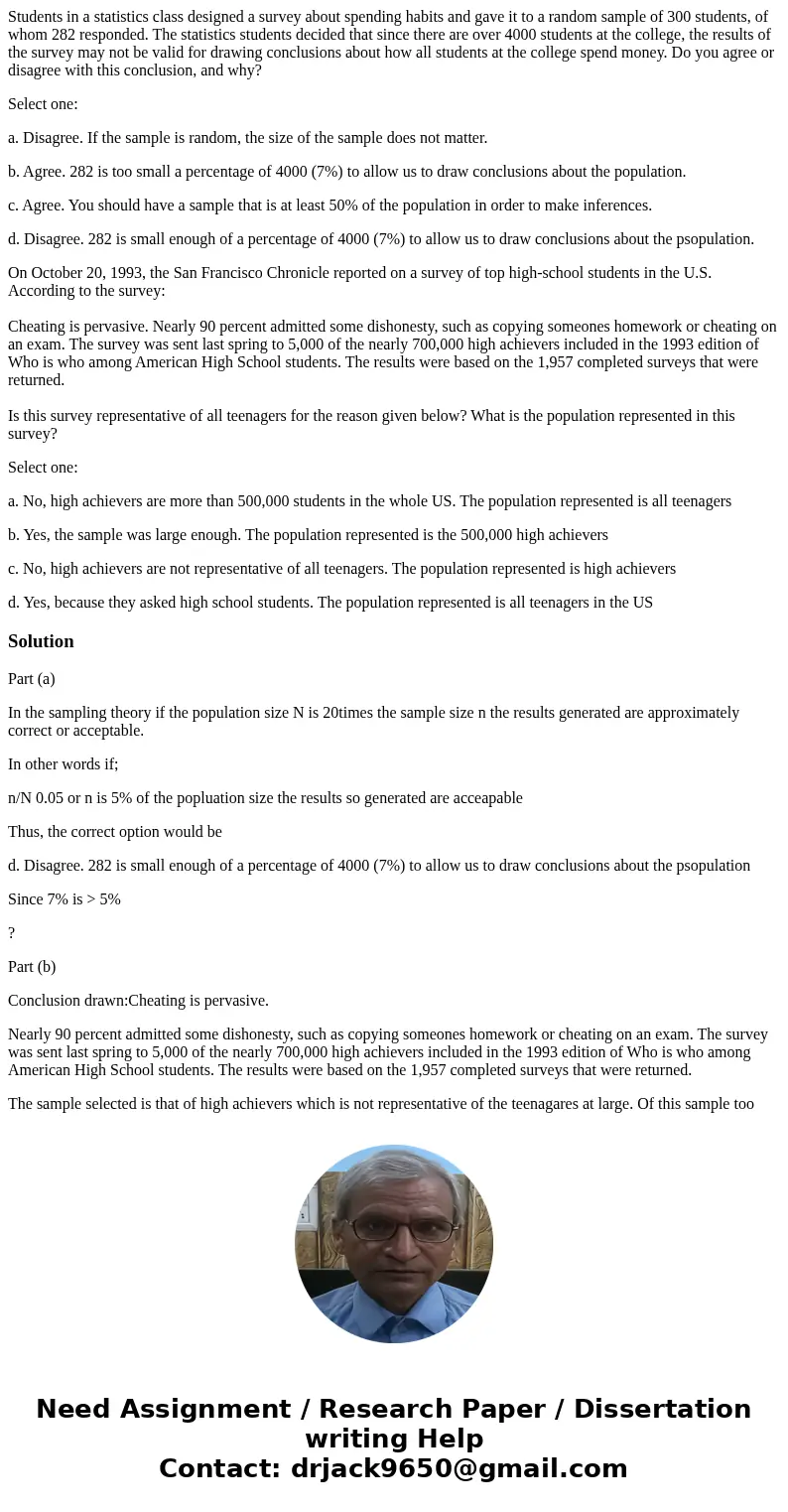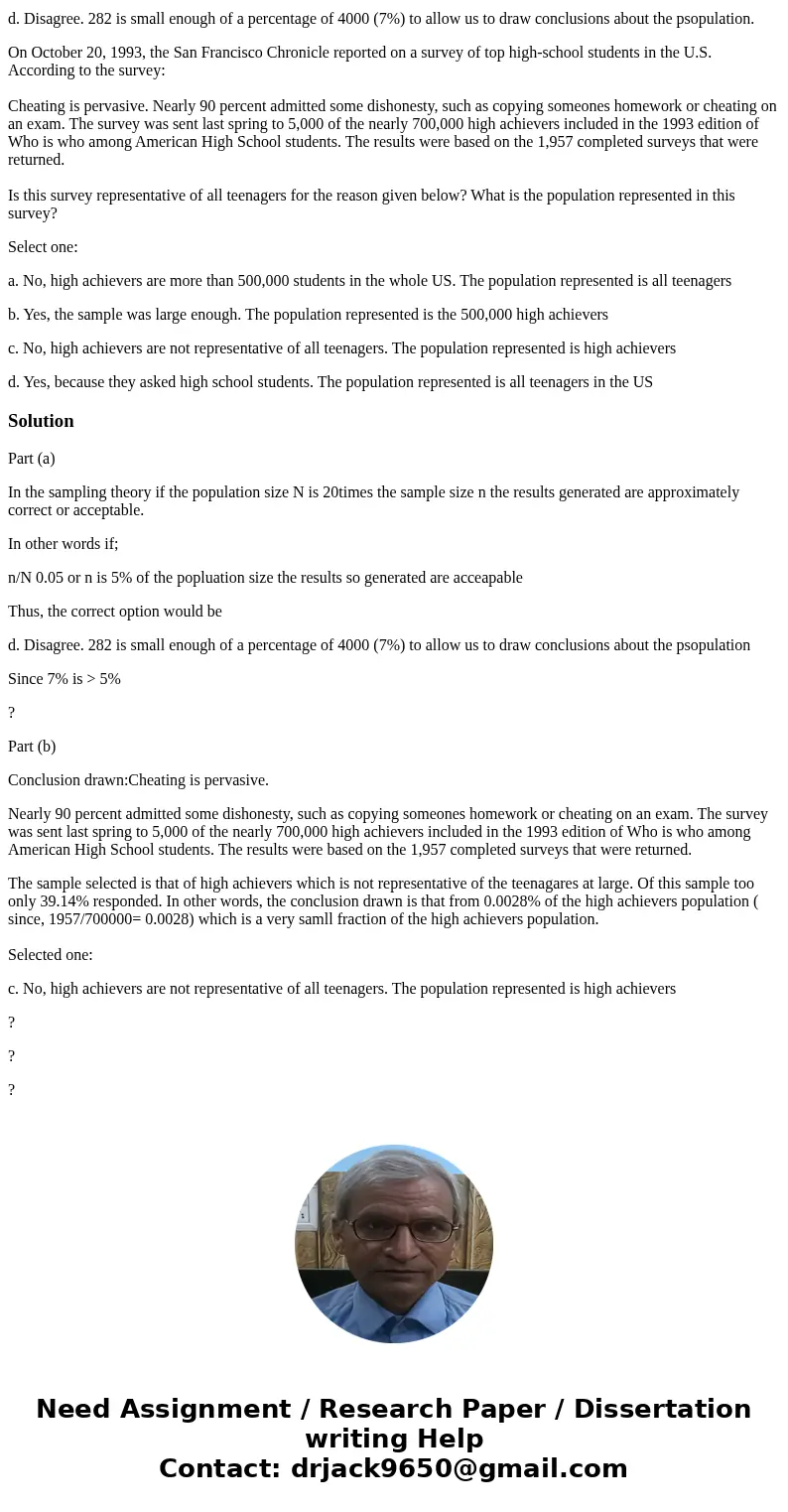Students in a statistics class designed a survey about spend
Students in a statistics class designed a survey about spending habits and gave it to a random sample of 300 students, of whom 282 responded. The statistics students decided that since there are over 4000 students at the college, the results of the survey may not be valid for drawing conclusions about how all students at the college spend money. Do you agree or disagree with this conclusion, and why?
Select one:
a. Disagree. If the sample is random, the size of the sample does not matter.
b. Agree. 282 is too small a percentage of 4000 (7%) to allow us to draw conclusions about the population.
c. Agree. You should have a sample that is at least 50% of the population in order to make inferences.
d. Disagree. 282 is small enough of a percentage of 4000 (7%) to allow us to draw conclusions about the psopulation.
On October 20, 1993, the San Francisco Chronicle reported on a survey of top high-school students in the U.S. According to the survey:
Cheating is pervasive. Nearly 90 percent admitted some dishonesty, such as copying someones homework or cheating on an exam. The survey was sent last spring to 5,000 of the nearly 700,000 high achievers included in the 1993 edition of Who is who among American High School students. The results were based on the 1,957 completed surveys that were returned.
Is this survey representative of all teenagers for the reason given below? What is the population represented in this survey?
Select one:
a. No, high achievers are more than 500,000 students in the whole US. The population represented is all teenagers
b. Yes, the sample was large enough. The population represented is the 500,000 high achievers
c. No, high achievers are not representative of all teenagers. The population represented is high achievers
d. Yes, because they asked high school students. The population represented is all teenagers in the US
Solution
Part (a)
In the sampling theory if the population size N is 20times the sample size n the results generated are approximately correct or acceptable.
In other words if;
n/N 0.05 or n is 5% of the popluation size the results so generated are acceapable
Thus, the correct option would be
d. Disagree. 282 is small enough of a percentage of 4000 (7%) to allow us to draw conclusions about the psopulation
Since 7% is > 5%
?
Part (b)
Conclusion drawn:Cheating is pervasive.
Nearly 90 percent admitted some dishonesty, such as copying someones homework or cheating on an exam. The survey was sent last spring to 5,000 of the nearly 700,000 high achievers included in the 1993 edition of Who is who among American High School students. The results were based on the 1,957 completed surveys that were returned.
The sample selected is that of high achievers which is not representative of the teenagares at large. Of this sample too only 39.14% responded. In other words, the conclusion drawn is that from 0.0028% of the high achievers population ( since, 1957/700000= 0.0028) which is a very samll fraction of the high achievers population.
Selected one:
c. No, high achievers are not representative of all teenagers. The population represented is high achievers
?
?
?


 Homework Sourse
Homework Sourse